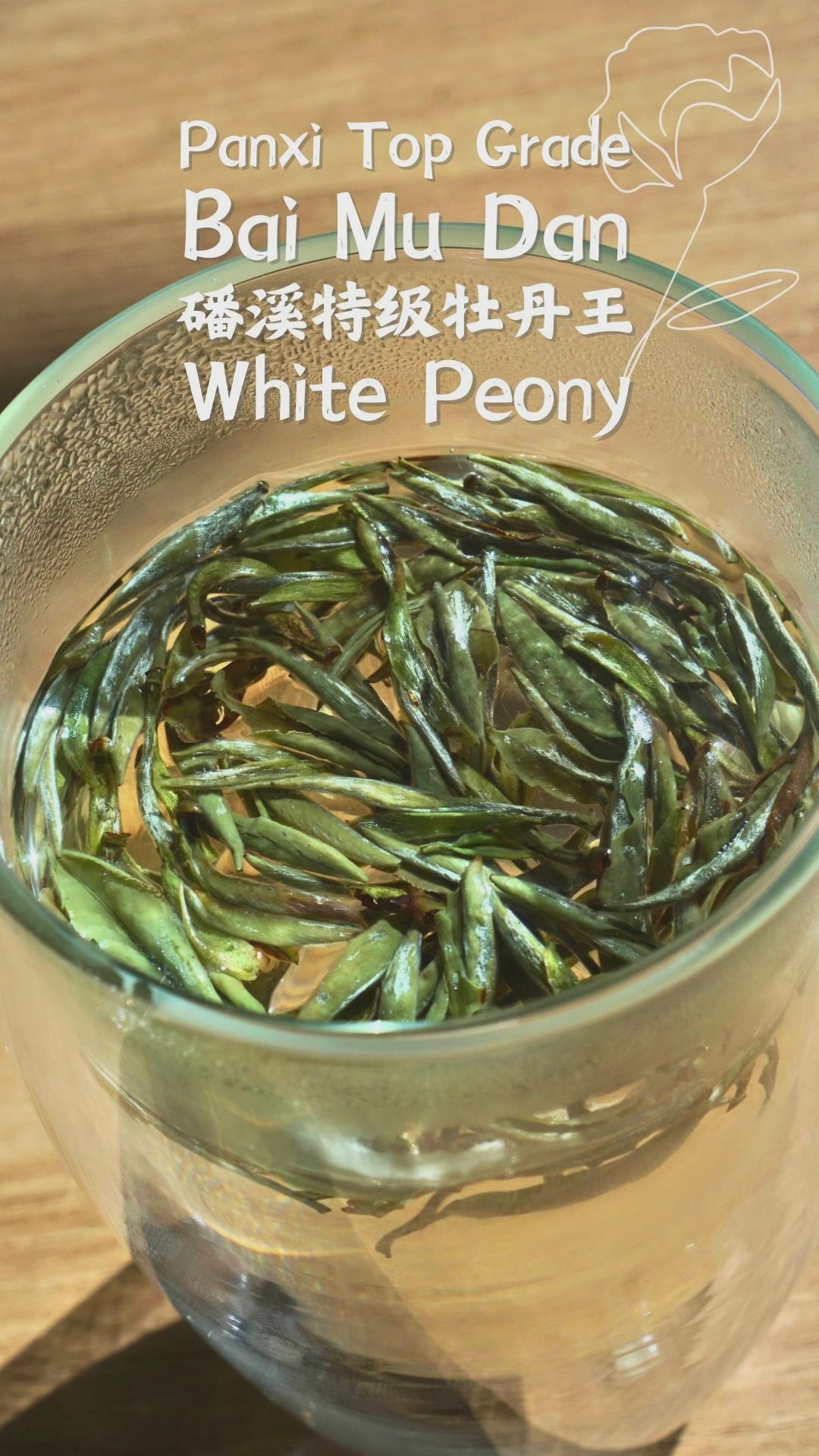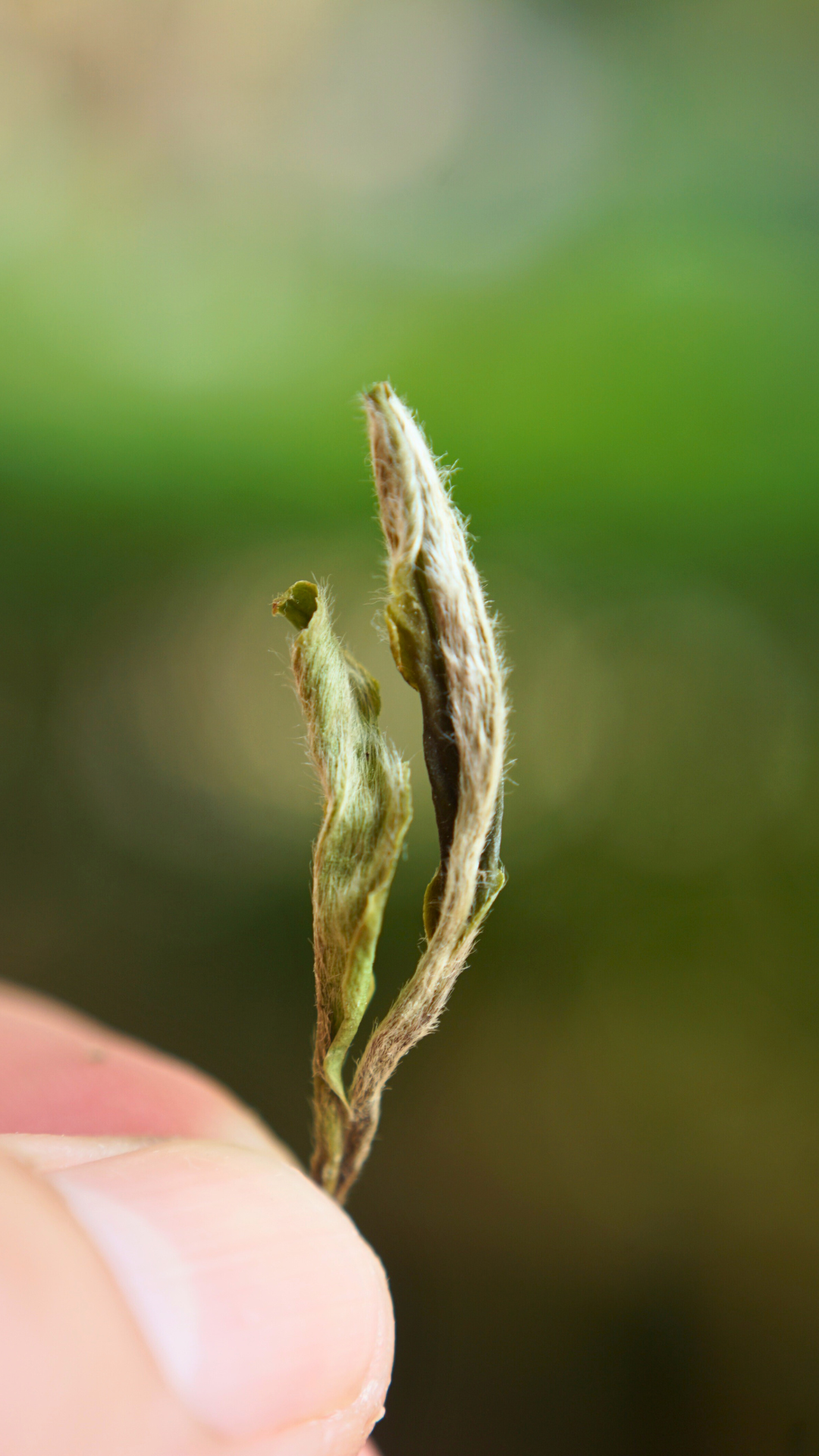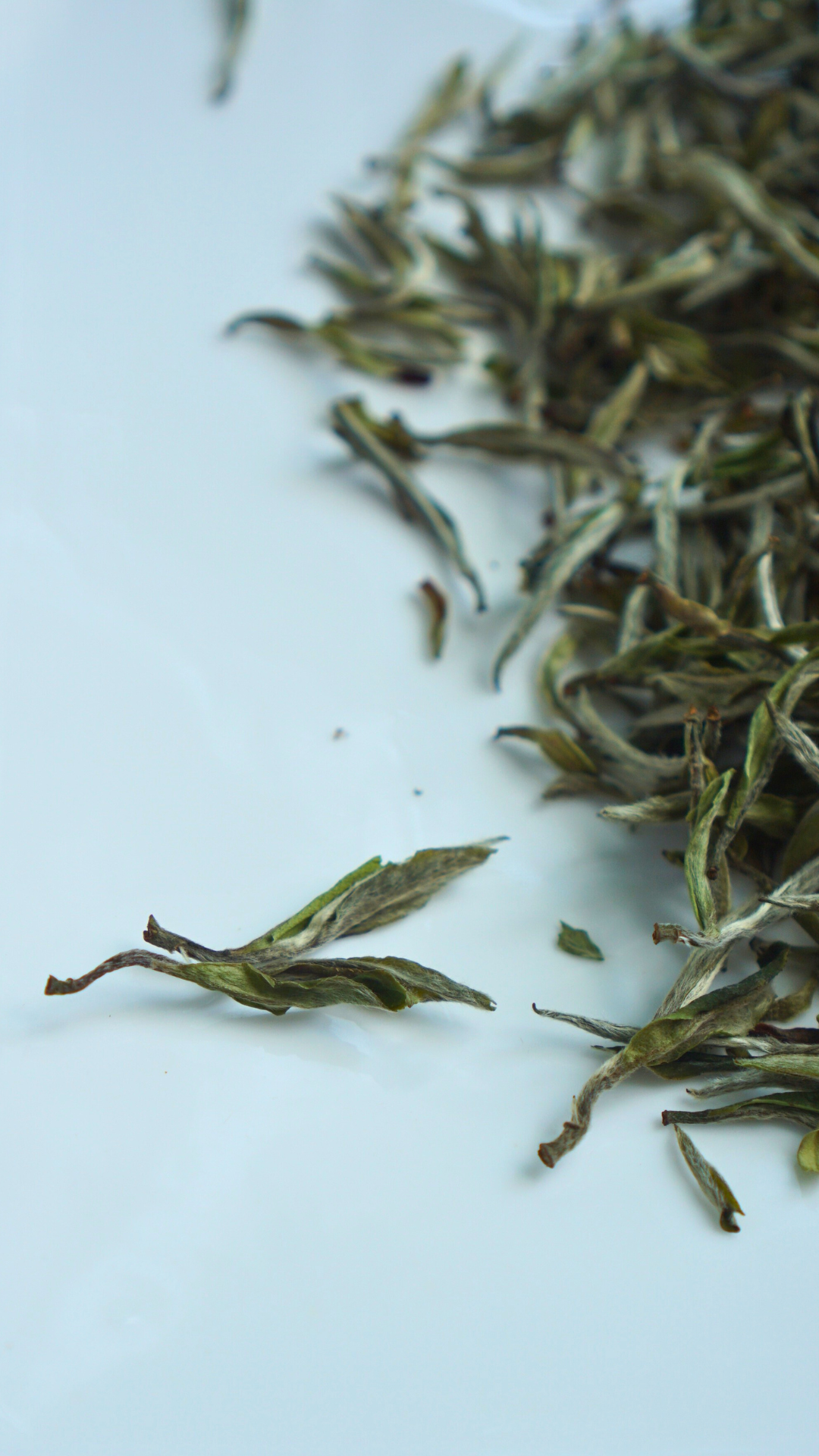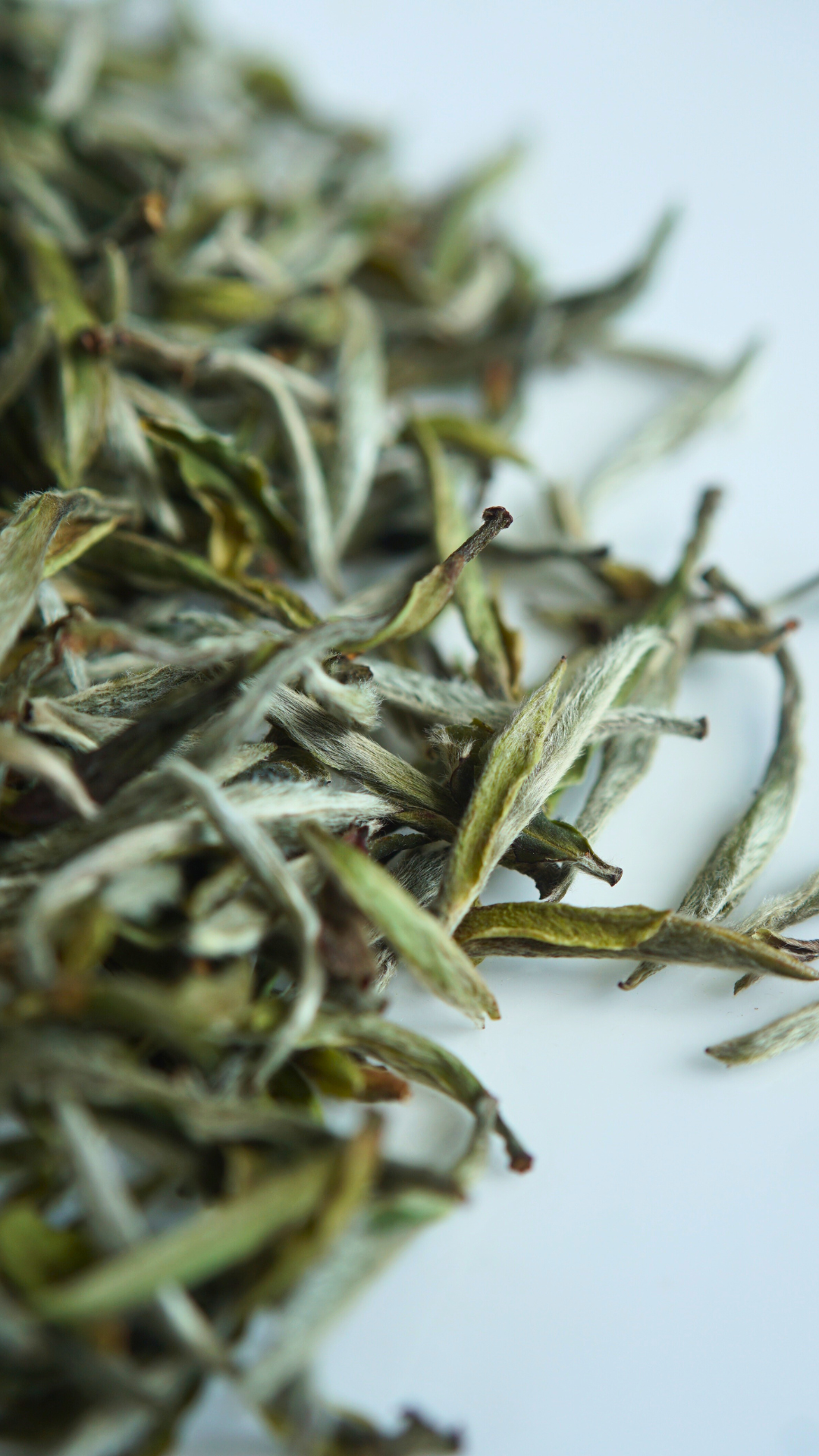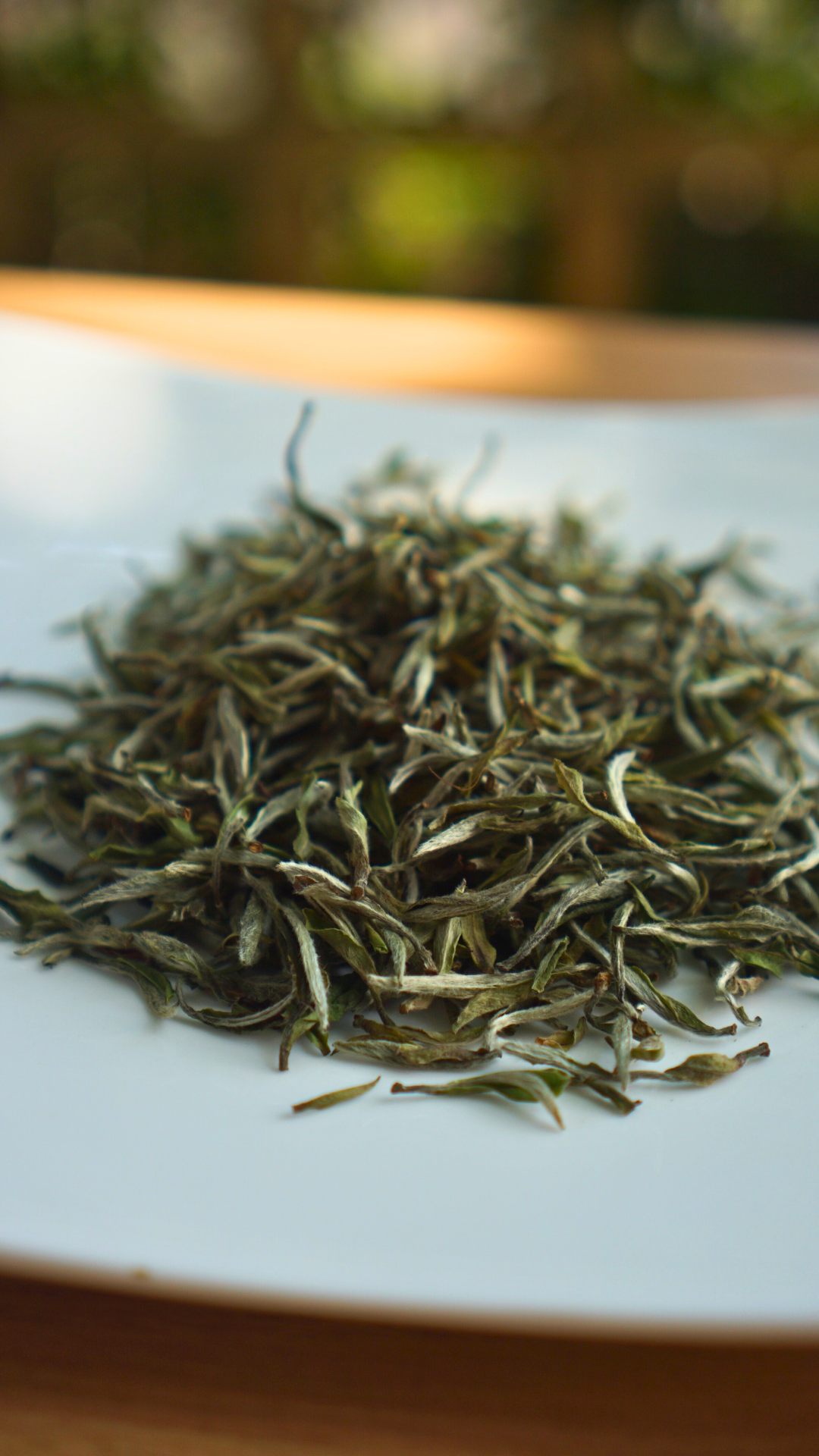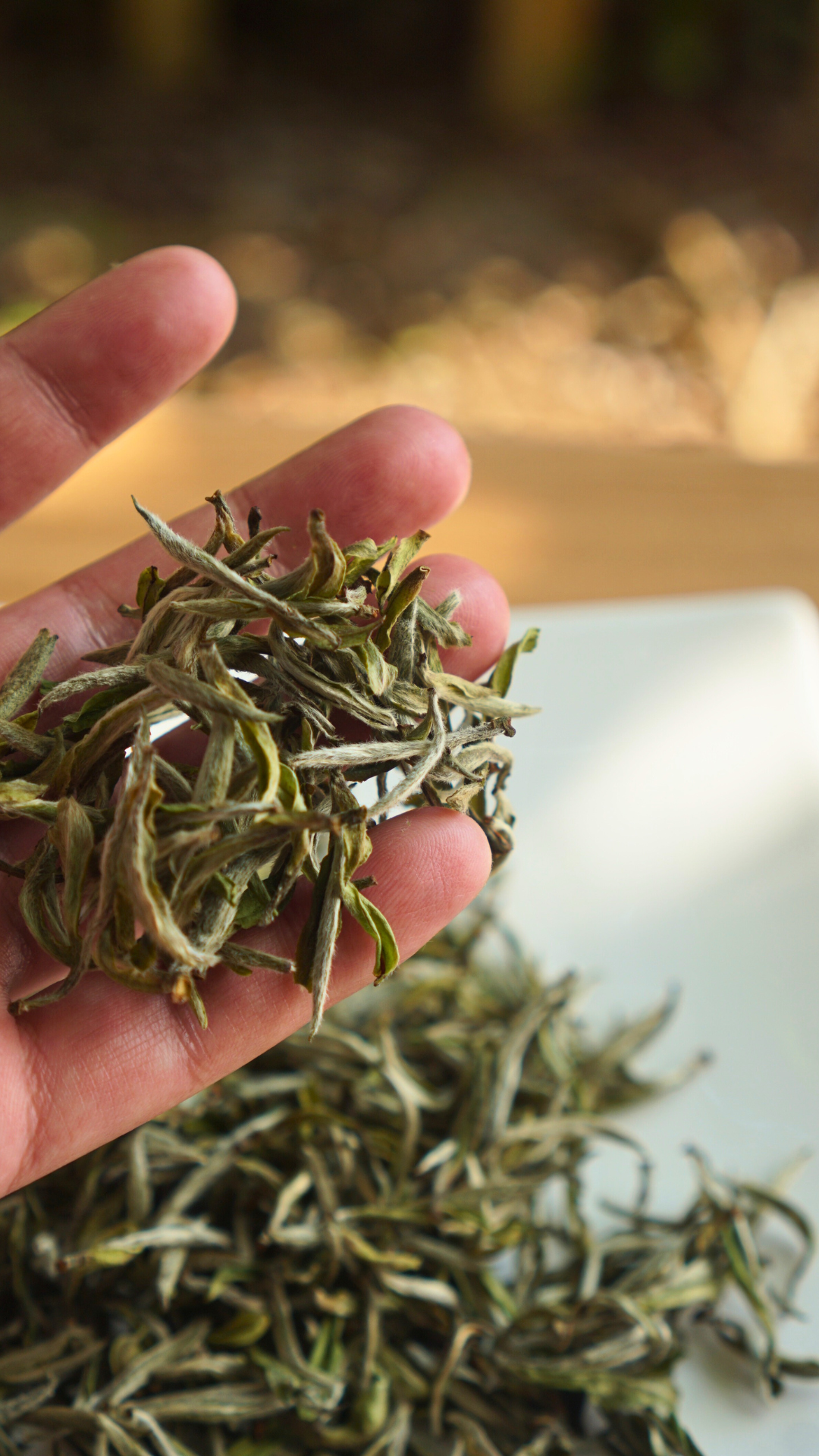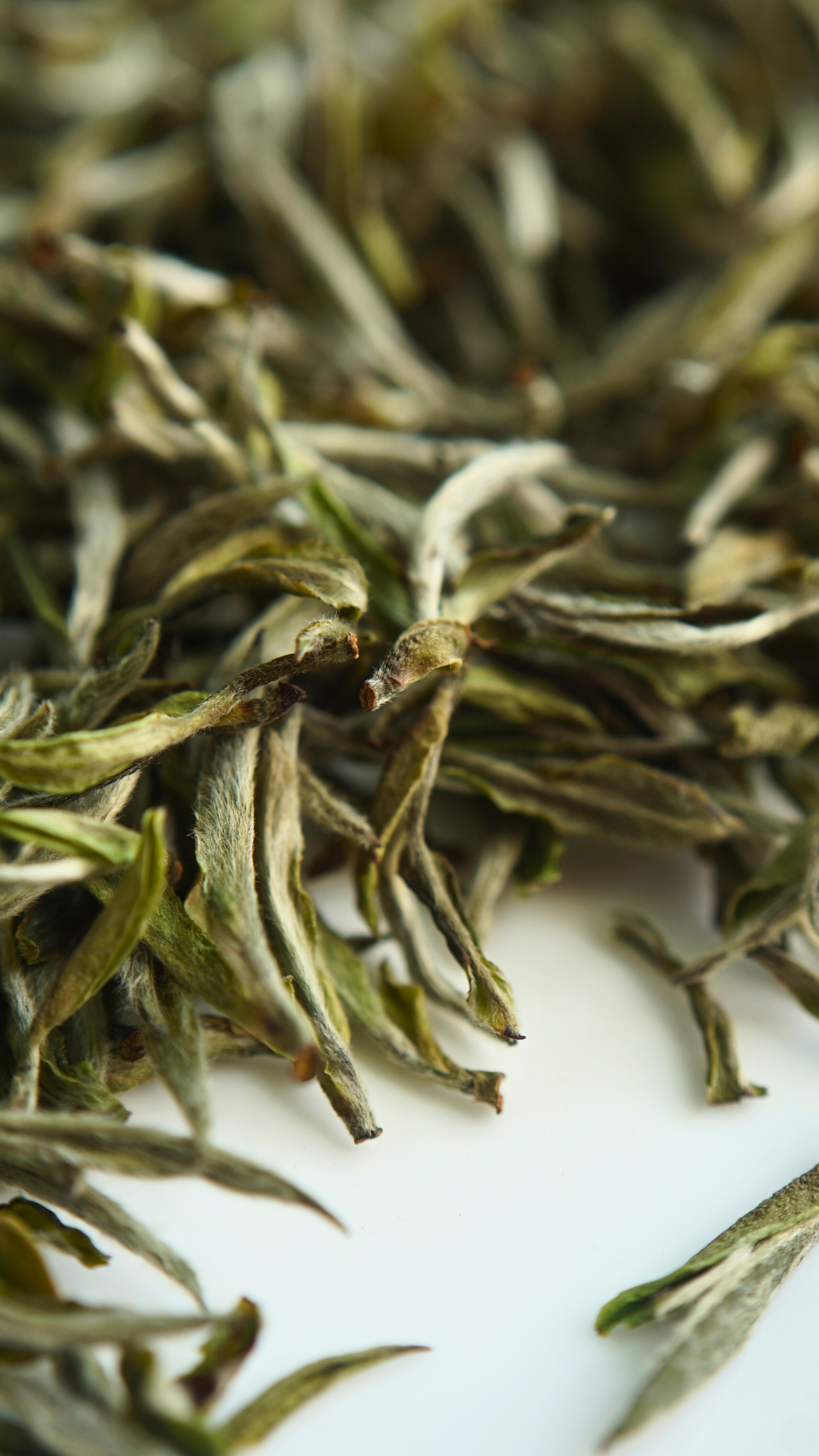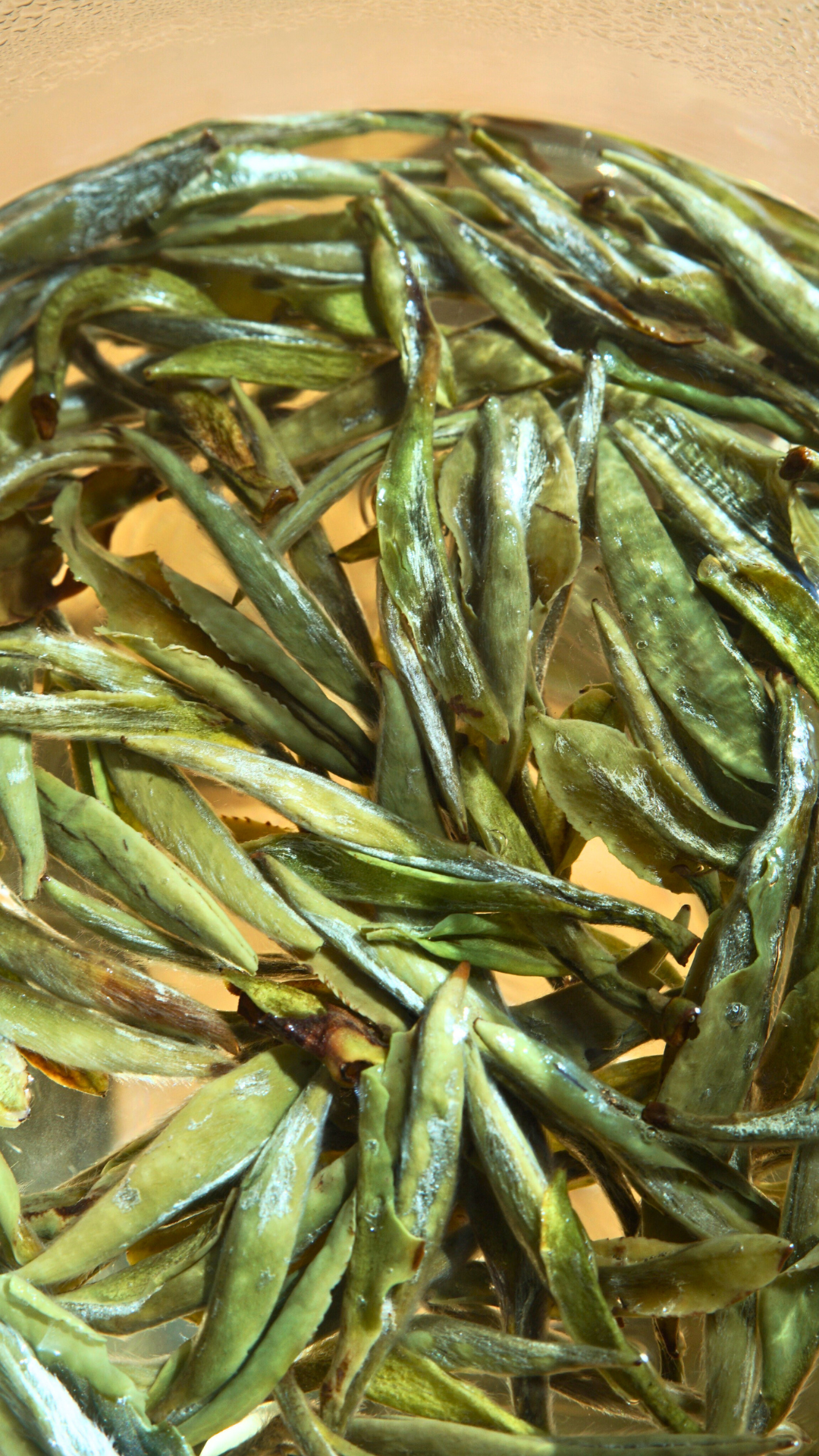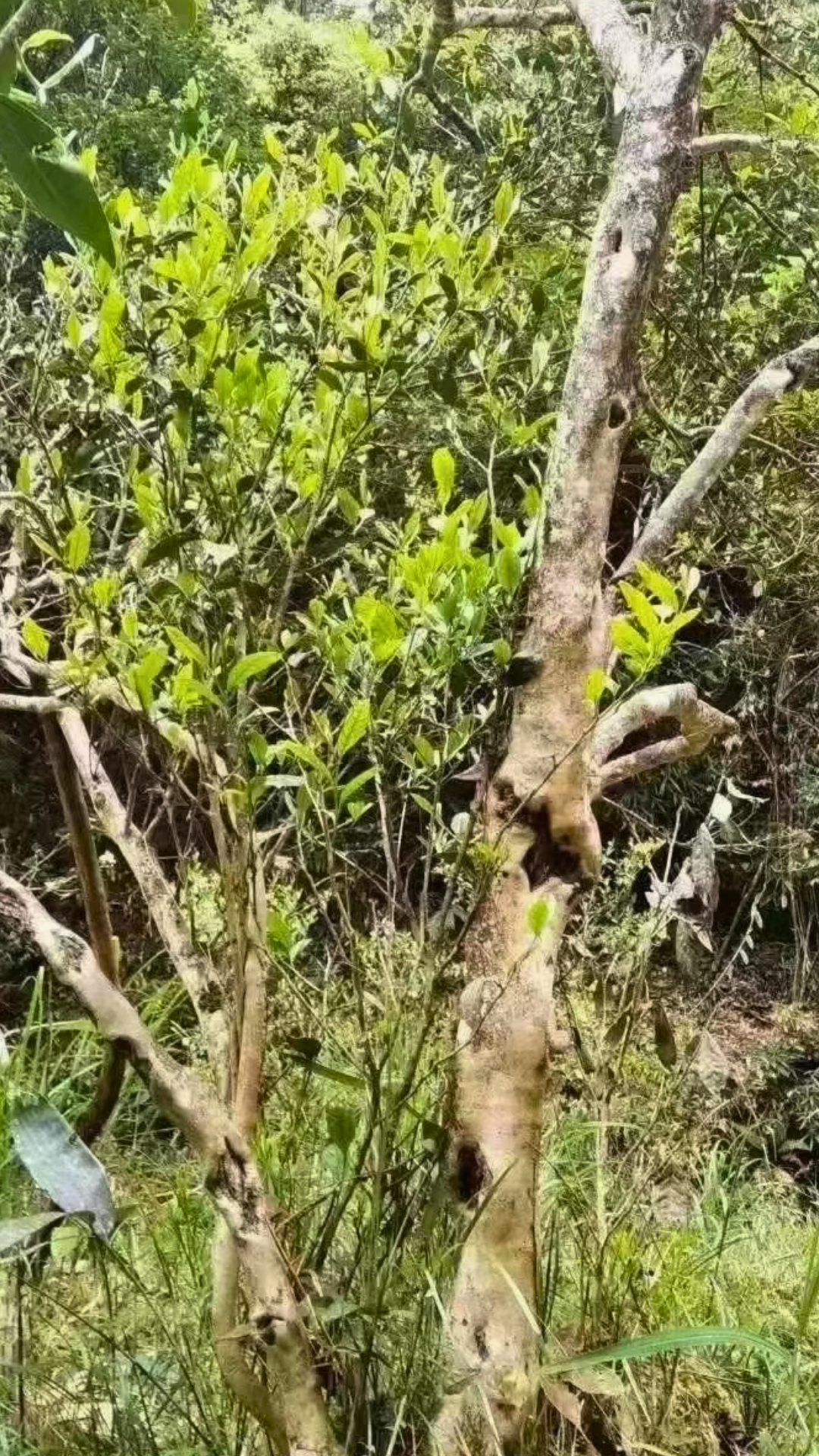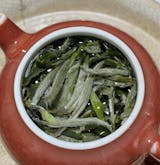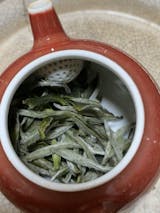Panxi Top Grade Bai Mu Dan
Panxi Top Grade Bai Mu Dan
磻溪特级牡丹王
Among white teas, Fuding White Tea is the most renowned. Fuding White Tea has several core production areas: Diantou Town(点头镇), Taimu Mountain Town(太姥山镇), Bailin Town(白琳镇), Guanyang Town(管阳镇), and Panxi Town(磻溪镇).
Among these core production areas, Panxi(磻溪) White Tea is widely recognized within tea circles as a high-quality region. The tea soup exhibits exceptional sweetness, often described as "rock candy sweet." Additionally, the tea soup has excellent saturation and texture.
There is a saying in the Fuding White Tea community: "Diantou(点头) tea belongs to the foothill system, Guanyang(管阳) tea belongs to the high mountain system, and Panxi(磻溪) tea belongs to the deep mountain system.
"Why is it called the "deep mountain system"?
This is because the Panxi tea area not only has relatively high altitudes but also features tea gardens mostly located deep within mountainous forests. For this reason, Panxi White Tea is also referred to as "deep mountain white tea."Panxi Town is situated in a remote location, far from the Fuding urban area, and is home to several mountains reaching over 1,000 meters (above sea level). The average elevation of the region is between 500 and 800 meters, with temperatures 2–4°C lower than areas at lower altitudes.
This slower growth of tea plants results in a higher accumulation of internal substances. Furthermore, the high altitude fosters frequent mist and humidity throughout the year. This consistent exposure to diffuse light enhances red and yellow spectrums, facilitating the synthesis of amino acids and caffeine, which aligns with the ideal conditions for producing high-quality tea in high-altitude, misty regions.
Additionally, tea science experts have assessed the soil in Fuding's core production areas and concluded that red and yellow clay soils are best suited for growing white tea. Panxi's soil primarily consists of red and yellow gravelly clay, which is rich in organic matter and minerals—highly beneficial for tea plant growth. Moreover, the soil and rocks in Panxi are highly weathered, with a notable presence of decomposed stones. These materials provide abundant organic and mineral nutrients for tea plants, resulting in tea leaves with an optimal amino acid-to-polyphenol ratio.
Therefore, the tea from Fuding's Panxi region is widely recognized as among the best. The price of fresh leaves consistently ranks highest among the core production areas.
White tea from the Panxi tea region is distinguished by its prominent fragrance, exceptional sweetness, lasting aftertaste, and rich, smooth flavor. For new tea drinkers especially, experiencing it often sets a high standard, making it hard to enjoy other varieties subsequently.
This Bai Mu Dan(white peony) white tea is made from fresh leaves picked before the Qingming Festival, the first harvest of early spring.
The tea trees growing deep in the high mountains of Fuding(福鼎) Panxi(磻溪) area, which are not artificially pruned.
After accumulating nutrients over the winter, the branches of the tea trees grow very tall, requiring ladders to climb and pick the leaves by hand. With extremely high tenderness, making it the highest grade of white tea material.
Each year's new tea represents the quality of that year's harvest.
This tea is characterized by its plump, creamy buds and thick, tender leaves that naturally rise into smooth, wave-like curves. The buds and leaves are seamlessly connected to their stems, with the leaf edges curling down gently to form a graceful shape.
The leaves have a muted gray-green color, complemented by silver-white buds that embrace the center in a unique “heart-hugging” form. The leaf undersides are covered in soft white fuzz, and the edges delicately curl backward, maintaining the integral connection between the buds, leaves, and stems.
Once brewed, the tea reveals a stunning visual of soft green leaves hugging delicate buds, reminiscent of flower buds beginning to bloom in all their vibrancy and beauty.
The tea soup carries a unique mountain essence, reminiscent of an orchid fragrance, with a sweet and refreshing taste that leaves a lasting impression, while the infused leaves are tender, even, and fully preserved.
Picking and Processing
Picking and Processing

The production process of white tea generally consists of two steps: withering and drying, with withering being the key stage.
Withering can be divided into indoor natural withering, mixed withering, and heated withering. It must be flexibly adapted to the climate, and for sunny spring and autumn days or clear summer days without oppressive heat, indoor withering or mixed withering is preferred.
The refining process involves removing stems, flakes, wax leaves, red leaves, and dark leaves, then baking over a gentle heat until sufficiently dry. This enhances the tea’s aroma with a subtle roasted scent. When the moisture content reaches 4%–5%, the tea is packed while still warm. The hallmark of white tea processing is that it neither destroys enzyme activity nor promotes oxidation, instead allowing for mild natural oxidation while maintaining the delicate aroma of the tea buds and a fresh and brisk flavor in the brew.

- Picking
White tea is picked when temperatures allow for tender, fresh leaves with one bud and one unfolding leaf in a jade white color. The process involves picking early, picking tender leaves, picking frequently, and ensuring clean picking. Buds and leaves must be uniform in size and shape, and the stems kept short. The tea is handled gently during harvesting, placed lightly in bamboo baskets, and transported in bamboo containers.

- Withering
Freshly picked leaves are spread evenly on bamboo trays in a thin layer and should not be disturbed. After spreading, the type of withering—indoor natural withering, mixed withering, or heated withering—is chosen based on the climate conditions and leaf grade. When the leaves are 70%–80% dry, both indoor natural withering and mixed withering require sieving.

- Drying
Initial drying: Dryer temperature at 100–120℃ for 10 minutes. Cooling: Spread and cool for 15 minutes. Re-drying: Dryer temperature lowered to 80–90℃, with low-temperature long drying at around 70℃.

- Storage
Dried tea leaves should have a moisture content of 5% or less and be stored at room temperature.
Brewing
Brewing
The brewing methods for new white tea, such as Baihao Yinzhen(silver needle downy tips) and Bai Mudan(white peony), are basically the same as those for green tea. However, since white tea is not rolled, the tea juices are not easily extracted, so the steeping time should be relatively longer.

Generally, 3–5 grams of white tea can be placed in a colorless, transparent glass cup that has been rinsed with boiling water. Add 200 milliliters of boiling water. At the beginning, the tea buds float on the water's surface. After 5–6 minutes, some buds will sink to the bottom of the cup, while others will suspend near the upper portion of the tea infusion. At this point, the tea buds stand upright, crossing up and down, resembling stalactites; it is quite a spectacle. After about 10 minutes, the tea infusion turns golden yellow and can be enjoyed. During this time, you can enjoy the sight while sipping the tea, washing away worldly distractions and filling yourself with pleasant interest.

You can also use a white porcelain gaiwan. Add 3–5 grams of white tea and pour in 150 milliliters of 95°C hot water. Cover and steep for about 2 minutes, then pour the tea infusion into a serving pitcher.
If you prefer the light and delicate aroma and taste of white tea, you can pour out the tea infusion after steeping for just 20 seconds. For subsequent brews, gradually increase the steeping time.

Aged white teas, such as Gongmei and Shoumei, can be cooked:
Aged white tea can either be cooked directly or brewed a few times before cooking. Choose a suitable utensil for brewing tea, such as a ceramic teapot, iron kettle, silver pot, or glass teapot. Place a proper amount of aged white tea, such as Shoumei or Gongmei, into the pot and add room-temperature water. Heat it until boiling, and let it simmer for a few minutes. The cooking time can be adjusted based on personal taste. Pour the cooked tea into a fairness cup, then distribute it into smaller tasting cups for drinking.
*Note:*
New white tea tends to become astringent when cooked for too long, so it’s not recommended to cook new tea. Likewise, Baihao Yinzhen and Bai Mudan, which are relatively tender, are not suitable for cooking.

When cooking aged white tea, you can also add other ingredients, such as red dates, honey, goji berries, lemon, dried tangerine peel, fruits, or dried flowers (jasmine, chrysanthemum, rose, osmanthus, etc.). This adds a special flavor unique to each addition and can also provide certain health benefits. For example, red date white tea combines the heat-clearing, fire-reducing properties of white tea with the qi and blood-boosting effects of red dates. Mixing an appropriate amount of aged white tea with red dates helps to improve digestion and boost blood health, making it ideal for consumption during the autumn and winter seasons.
The cold-brew method is suitable for high-grade white buds, such as Baihao Yinzhen and Bai Mudan:

Find a suitably sized kettle or bottle. Add an appropriate amount of loose tea, with the quantity adjustable based on personal preference. Add sufficient cold water (filling the container is fine) and optionally some ice cubes. After 1–2 hours, it’s ready to drink, or you can refrigerate it overnight. By the next day, you’ll have a chilled, sweet, and mellow cold-brew tea.
Cold-brewed tea is very suitable for hot weather. However, for those with sensitive digestion or weak stomachs, it’s best not to drink too much cold-brewed white tea. It’s recommended for such individuals to drink more warm white tea instead.
White Tea Storage
White Tea Storage
White tea is easy to store, as it can be preserved for a long time under dry, light-proof, and odor-free conditions.
In Fuding's folk culture, there is a saying, "One year as tea, three years as medicine, seven years as treasure," suggesting that the older the white tea, the higher its medicinal value.
In fact, research comparing the health benefits of white tea stored for 1 year, 5 years, and 20 years has confirmed that with extended storage time, aged white tea demonstrates better effects in anti-inflammatory, antiviral, blood sugar-lowering, uric acid-reducing, and repairing alcohol-induced liver damage compared to fresh white tea. This is because, as the years go by, the flavonoid content in white tea increases, enhancing its antioxidant and anticancer effects.
Additionally, aged white tea is detoxifying without causing a cooling effect on the body and has a sweeter, smoother, and mellower taste compared to new tea.
The longer it is stored, the more its aroma evolves: fresh white tea from the same year has a unique "silver needle fragrance with honey notes," transitioning to a lotus leaf aroma after 3–8 years, a jujube-like fragrance after 8–15 years, and a herbal scent after 15 years or more.
Meanwhile, for high-grade white teas like Baihao Yinzhen (Silver Needle) and Bai Mudan (White Peony), the optimal drinking period is usually around 3 to 5 years.
After being stored for a certain number of years, the astringency of the fresh tea fades, leaving behind a sweet and mellow taste, making it ideal for consumption.
Good aged white tea has a liquor color resembling amber, bright and glossy. Its flavor is rich and full-bodied, smoother on the palate, with sweetness and viscosity gradually increasing. The dry leaves exude a sweet aroma, and upon careful observation, you can detect a subtle lotus fragrance.
The moment the tea is brewed, the liquor's golden hue is alluring. Upon tasting, the sweetness bursts on the taste buds, filling the heart with delight. It feels smooth and soothing, bringing a sense of serenity and physical comfort with every sip.

- Loose White Tea
- 500g/pouch
- Free Shipping
Couldn't load pickup availability








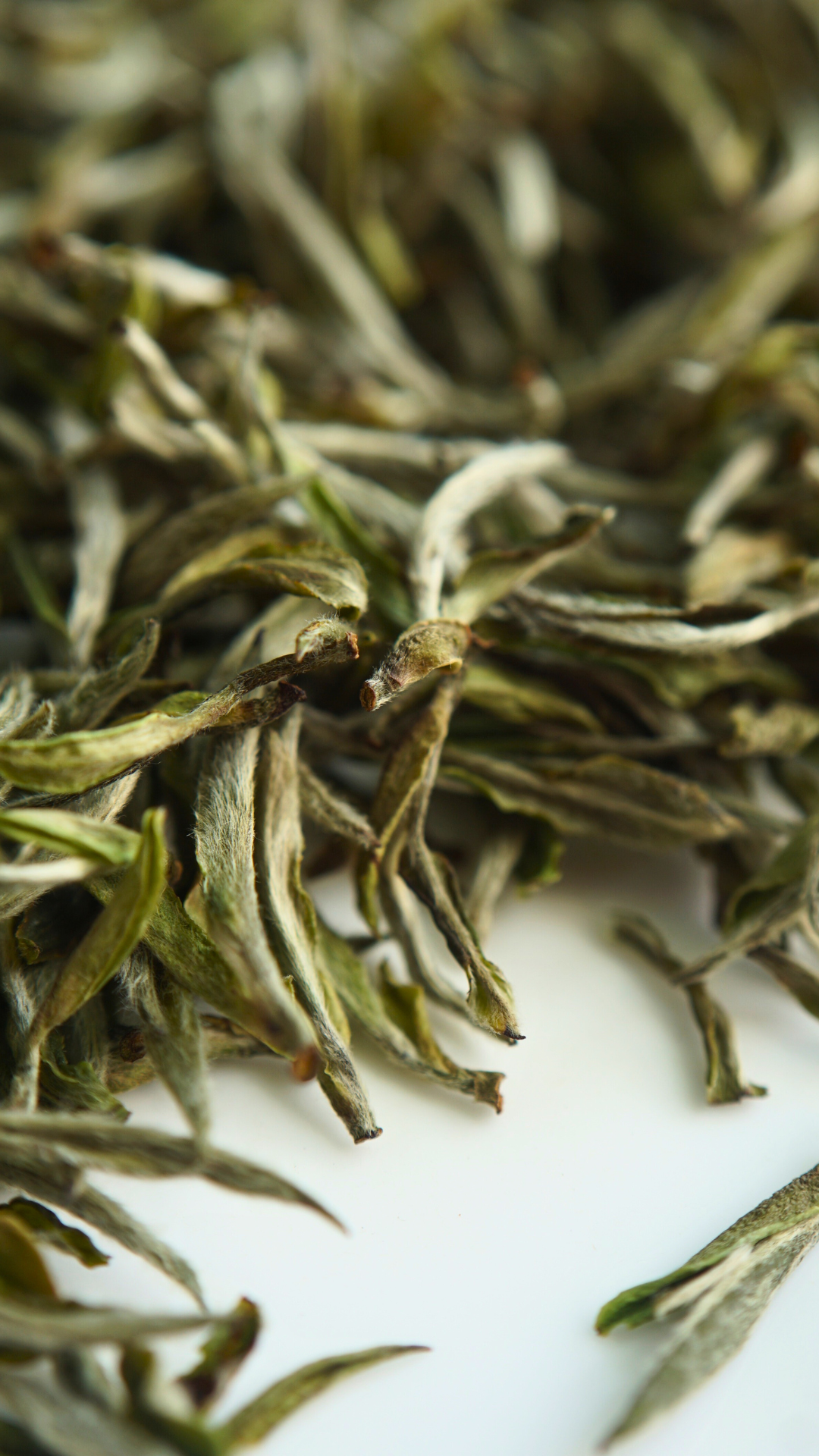

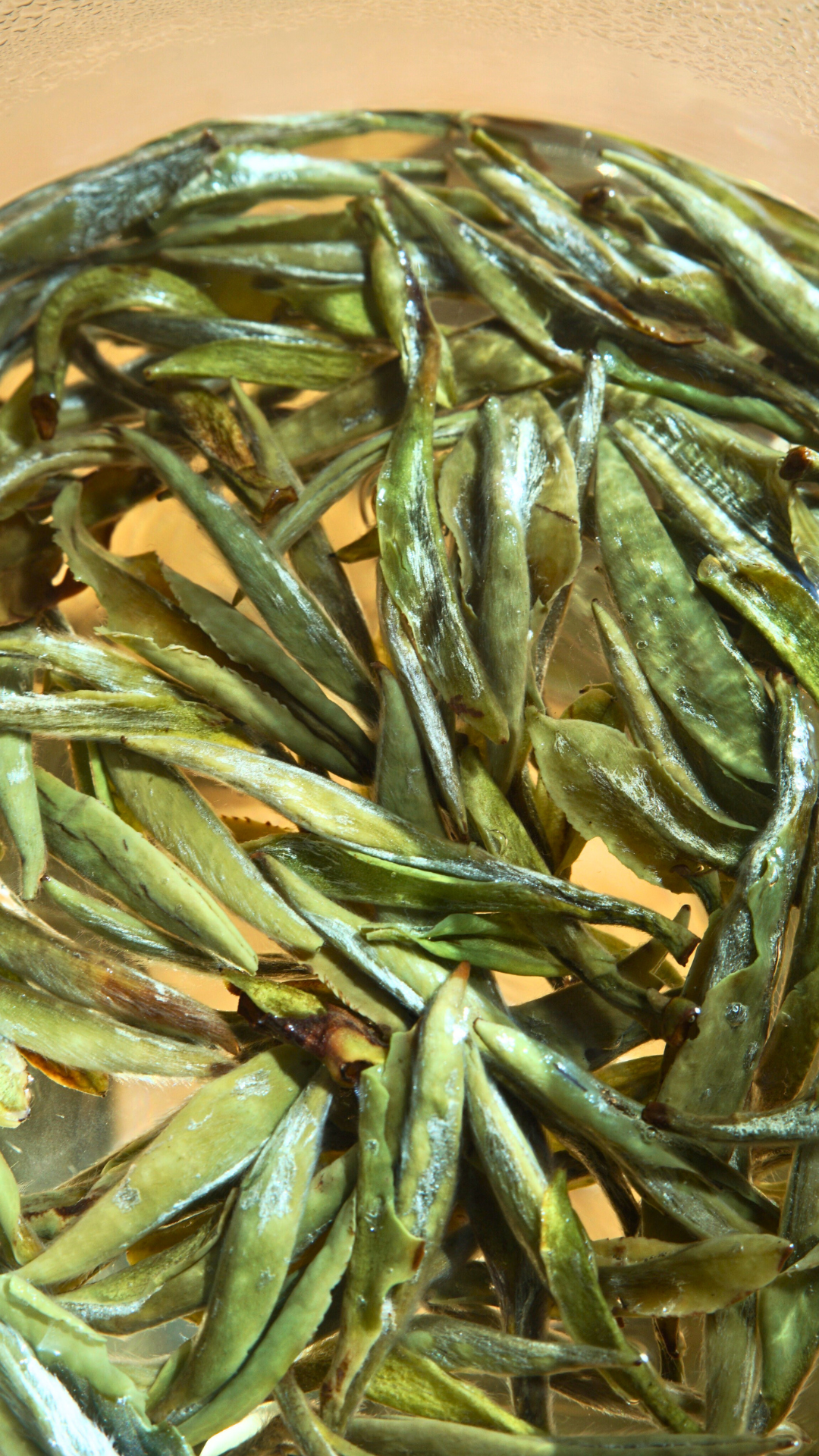
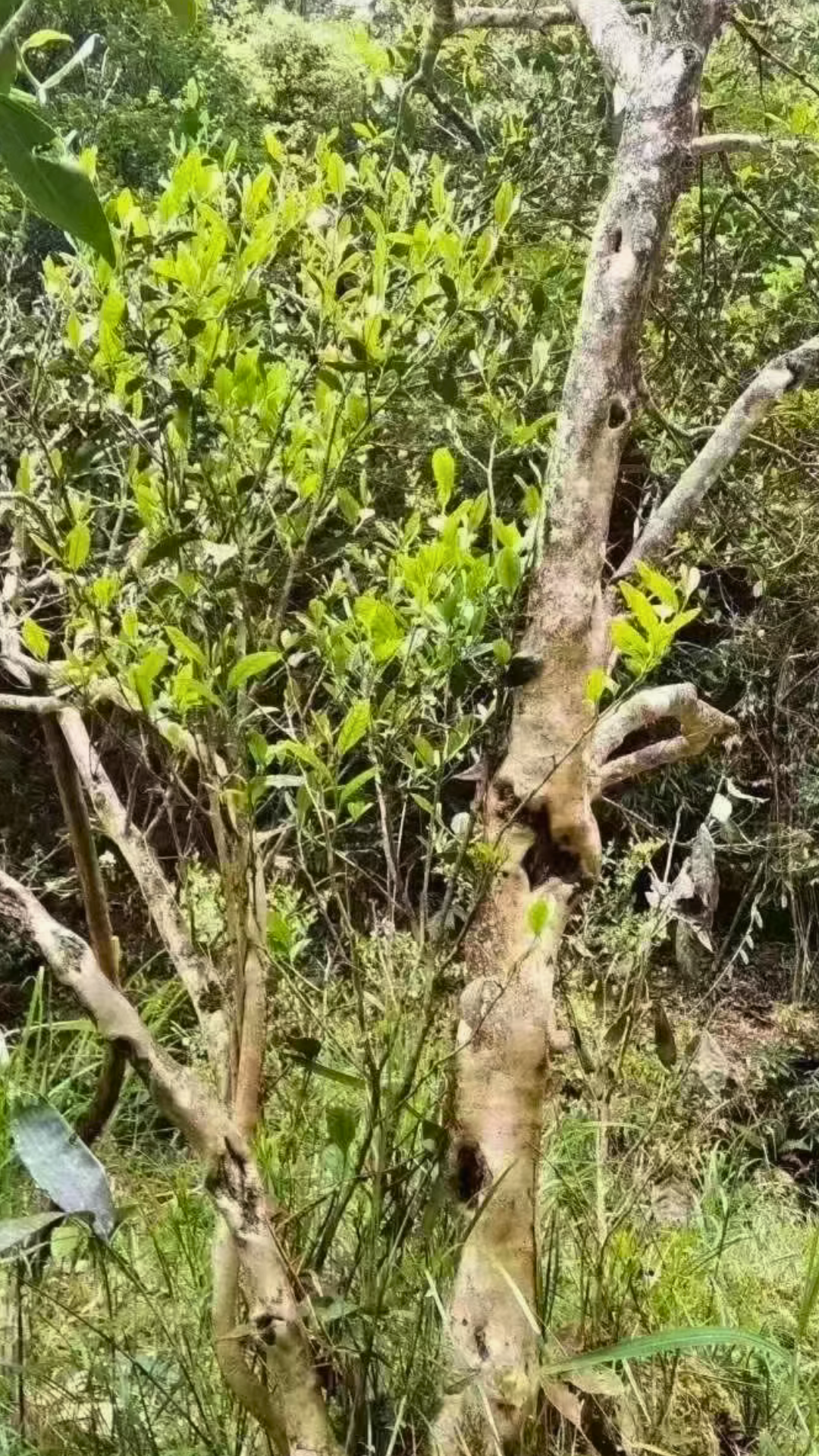
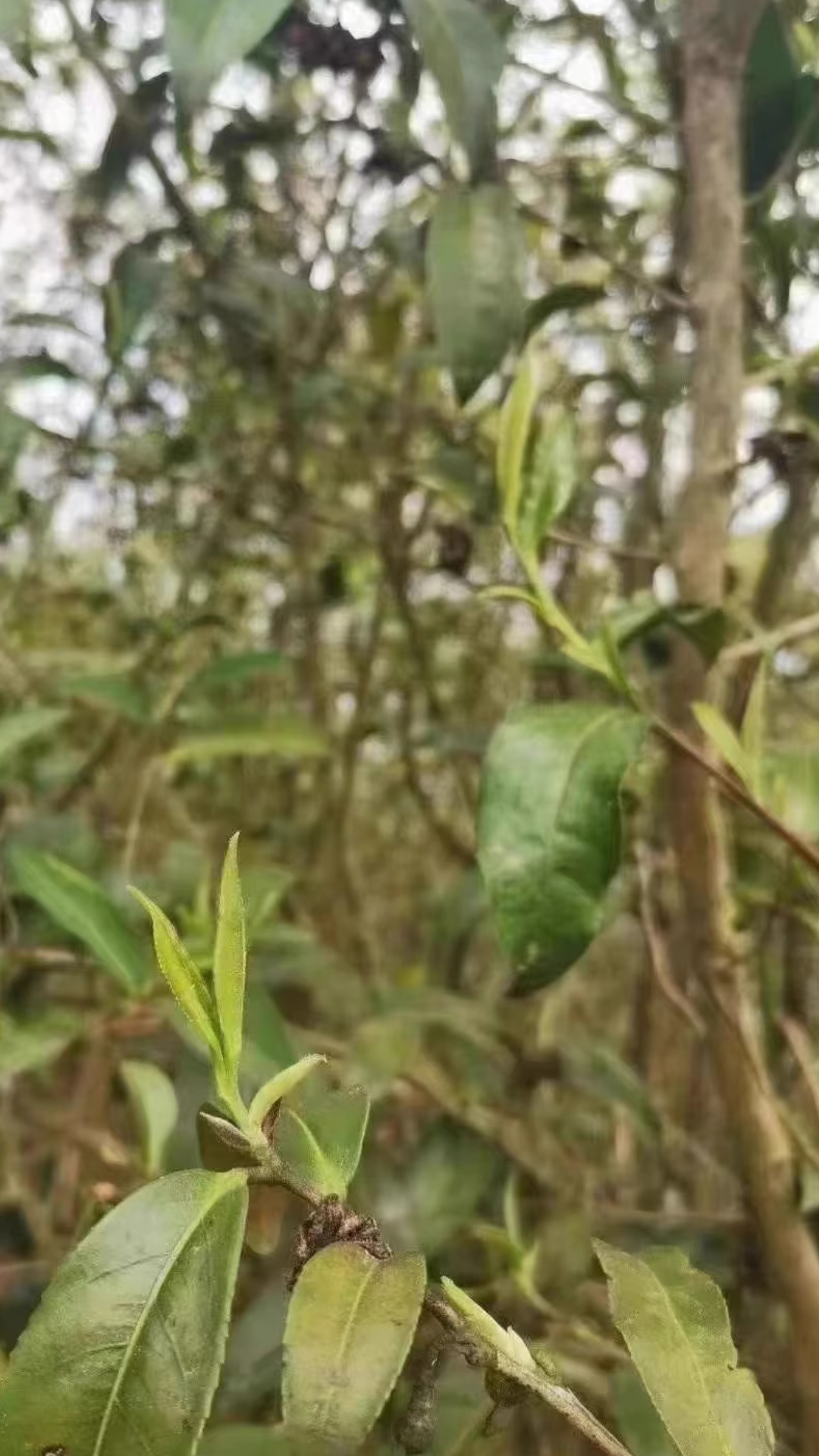
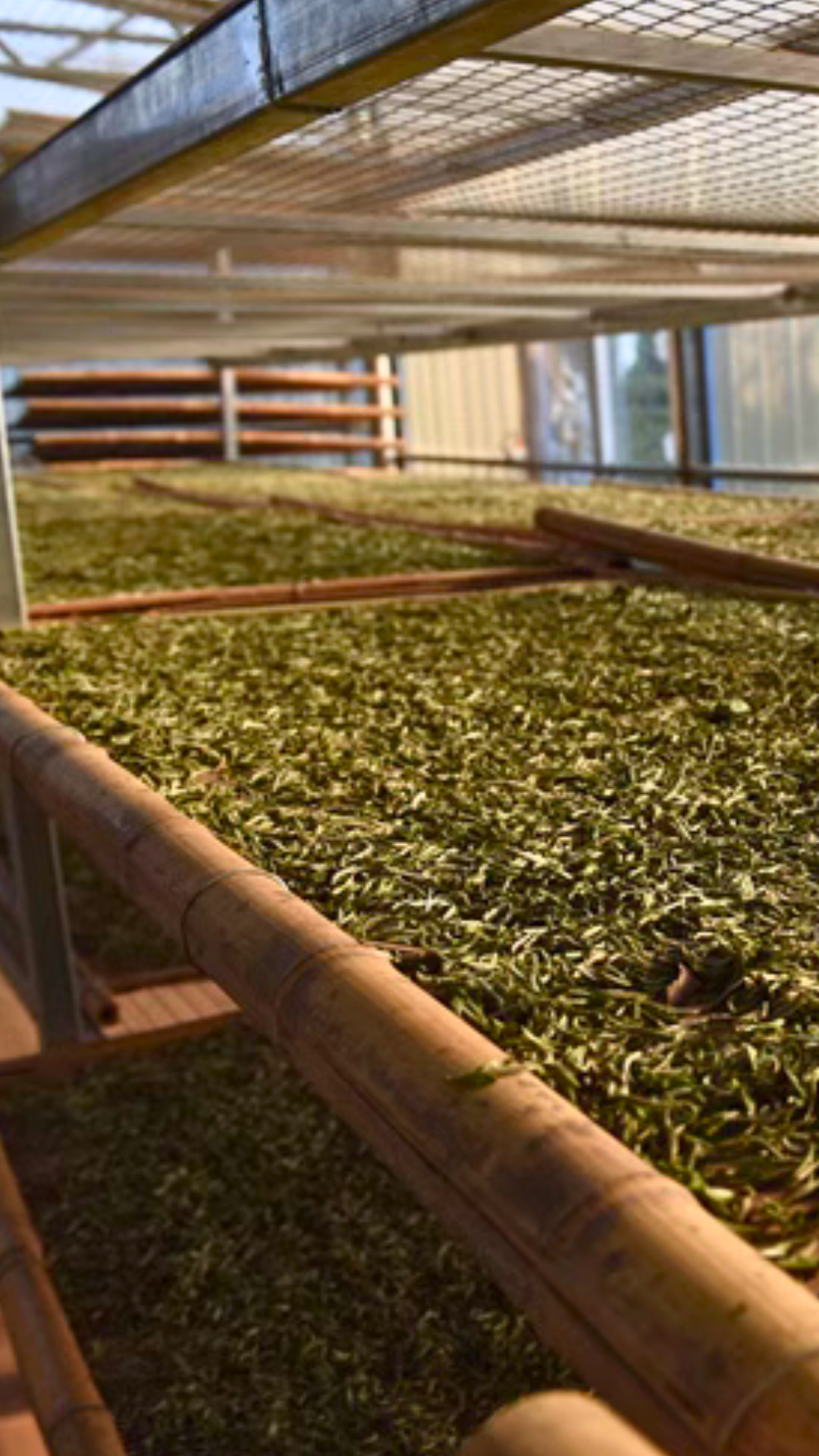
What is the difference between this bai mu dan and bai hao yinzen?
Simply put, this Bai Mu Dan consists of one bud and one or two leaves, while the Bai Hao Yin Zhen is made of single buds. It is generally believed that the Bai Hao Yin Zhen is of higher grade because it is rarer.
In my opinion, this Baimudan tea is not much different from the one produced in Guanyang. The leaves are smaller, and the tea buds are a bit sturdier. What I find more distinctive about this one is its more pronounced orchid aroma. However, considering the price, I think the Mudan tea from Guanyang is also a good choice.
Hi Ryan, this Bai Mu Dan is picked from high mountain old tea trees. The growing environment for the tea trees is better, and it is also a relatively sought-after production area at present, so the price is slightly higher. This is because the purchase price of fresh leaves is also higher.

